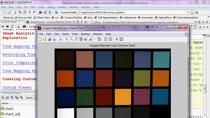Display, Segment, and Process Medical Imaging Data with MATLAB
The Medical Image Labeler app, released with the new Medical Imaging Toolbox™, is designed to visualize, segment, and process medical images in MATLAB®.
Import CT scans, MRI, ultrasound, or microscopy medical imaging data directly into the app from DICOM, NIfTI, or NRRD formatted files. Analyze the data by displaying the images slice by slice in the transverse, sagittal, and coronal planes of view. Visualize the entire volume in the 3D display panel with your preferred rendering options.
Segment and label the images and volumes manually or using one of the many automated techniques featured in the app. Use “Active Contours,” “Paint by Super Pixels,” “Edge Smoothing,” and many more functionalities to speed up the labeling workflow. Import your image processing or deep learning algorithms into the app for customized segmentation procedures.
Use the app to display the final results and publish them in PDF format. Export the labeled volumes and use them for diagnostic or radiomics applications.
Published: 6 Feb 2023





